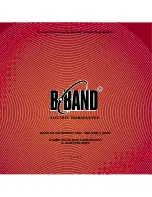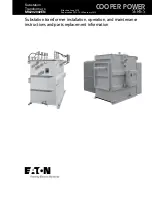For 16-bit conversions, the code transitions only after the full code width is present, so
the quantization error is -1 LSB to 0 LSB and the code width of each step is 1 LSB.
24.7.2.5 Linearity errors
The ADC may also exhibit non-linearity of several forms. Every effort has been made to
reduce these errors, but the system designers must be aware of these errors because they
affect overall accuracy:
• Zero-scale error (E
ZS
), sometimes called offset: This error is defined as the difference
between the actual code width of the first conversion and the ideal code width. This
is 1/2 LSB in 8-bit, 10-bit, or 12-bit modes and 1 LSB in 16-bit mode. If the first
conversion is 0x001, the difference between the actual 0x001 code width and its ideal
(1 LSB) is used.
• Full-scale error (E
FS
): This error is defined as the difference between the actual code
width of the last conversion and the ideal code width. This is 1.5 LSB in 8-bit, 10-bit,
or 12-bit modes and 1 LSB in 16-bit mode. If the last conversion is 0x3FE, the
difference between the actual 0x3FE code width and its ideal (1 LSB) is used.
• Differential non-linearity (DNL): This error is defined as the worst-case difference
between the actual code width and the ideal code width for all conversions.
• Integral non-linearity (INL): This error is defined as the highest-value or absolute
value that the running sum of DNL achieves. More simply, this is the worst-case
difference of the actual transition voltage to a given code and its corresponding ideal
transition voltage, for all codes.
• Total unadjusted error (TUE): This error is defined as the difference between the
actual transfer function and the ideal straight-line transfer function and includes all
forms of error.
24.7.2.6 Code jitter, non-monotonicity, and missing codes
Analog-to-digital converters are susceptible to three special forms of error:
• Code jitter: Code jitter occurs when a given input voltage converts to one of the two
values when sampled repeatedly. Ideally, when the input voltage is infinitesimally
smaller than the transition voltage, the converter yields the lower code, and vice-
versa. However, even small amounts of system noise can cause the converter to be
indeterminate, between two codes, for a range of input voltages around the transition
voltage.
Application information
MKW01Z128 MCU Reference Manual, Rev. 3, 04/2016
478
Freescale Semiconductor, Inc.
Summary of Contents for MKW01Z128
Page 7: ...MKW01xxRM Reference Manual Rev 3 04 2016 viii Freescale Semiconductor Inc...
Page 11: ...MKW01xxRM Reference Manual Rev 3 04 2016 xii Freescale Semiconductor Inc...
Page 133: ...MKW01Z128 MCU Reference Manual Rev 3 04 2016 2 Freescale Semiconductor Inc...
Page 233: ...Module clocks MKW01Z128 MCU Reference Manual Rev 3 04 2016 102 Freescale Semiconductor Inc...
Page 513: ...Interrupts MKW01Z128 MCU Reference Manual Rev 3 04 2016 382 Freescale Semiconductor Inc...
Page 633: ...CMP Trigger Mode MKW01Z128 MCU Reference Manual Rev 3 04 2016 502 Freescale Semiconductor Inc...


















